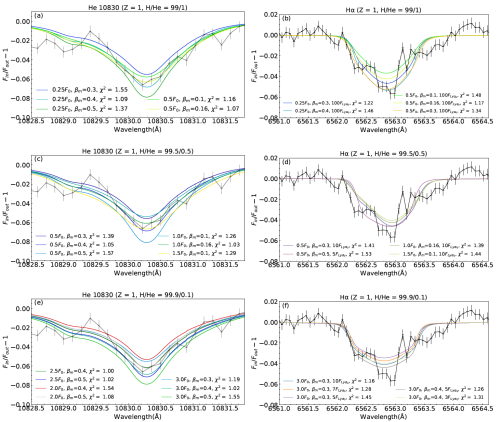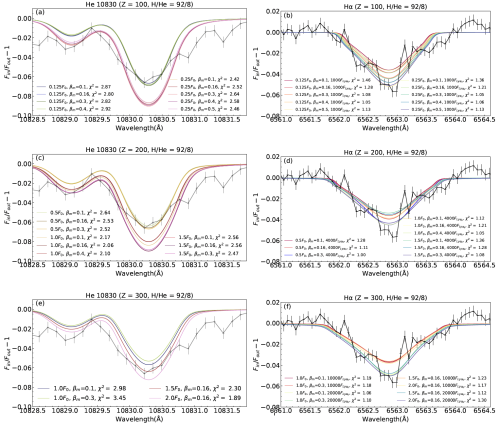
Recently, a research team led by Dr. YAN Dongdong from the Yunnan Observatories of the Chinese Academy of Sciences, for the first time, simultaneously reproduced the observations of the transmission spectra of the exoplanet HAT-P-32b in the optical band (Hα) and near-infrared band (Heλ 10830).
They studied the properties of its escaping atmosphere, proposed that the metallicity of the upper atmosphere is much lower than that of the lower atmosphere, and suggested that the host star has a very strong activity.
The results of the study were published in the journal Astronomy & Astrophysics.
Previous spectroscopic observations of HAT-P-32b's lower atmosphere indicated that its metallicity is 100-200 times that of the Sun. However, its upper atmospheric metallicity had not been well understood.
By analyzing the absorption, i.e. transmission spectra, of spectral lines in different bands, such as Hα and Heλ 10830, the composition and properties of the planetary atmosphere can be studied. While the transmission spectra of both Hα and Heλ 10830 were detected in HAT-P-32b, no previous work had used a self-consistent model to reproduce the observed signal of both spectral lines concurrently.
This research utilized the hydrodynamic escape atmosphere model, radiative transfer model, and non-local thermodynamic equilibrium model developed by the group. The team developed the spherical symmetric Monte Carlo model to simulate the resonance scattering process of stellar and planetary Lyα photons in the planetary atmosphere. This allowed them to obtain the distribution of Lyα scattering rate Pα, which was then used to calculate the distribution of hydrogen atoms in the excited state that causes Hα absorption.
Additionally, they calculated the distribution of metastable helium (He) atoms and simulated the transmission spectra of the hot Jupiter HAT-P-32b in the optical band and near-infrared band.
These simulations constrained the levels of stellar X-ray and extreme ultraviolet radiation received by the planet. Researchers found that the hydrogen-helium abundance ratio in the planet's atmosphere (approximately 99.5/0.5) is higher than the solar value. The team then inferred that the star’s Lyα flux is about 4×105erg cm-2s-1, indicating that the star has a very strong activity.
The study also showed that although the planet's lower atmosphere has a super-solar metallicity where metals are mainly in the form of sub-micron particles in clouds and haze, its upper atmosphere has a metallicity close to that of the Sun.
Furthermore, the work suggested that there are expanding and escaping neutral hydrogen and helium gases around the planet, and the mass loss rate can be as high as 1013g/s.
Besides, the researchers proposed that under intense XUV radiation, He atoms are easily dragged by H atoms and escape. The results suggested the He abundance in the upper atmosphere is much lower than the solar value, which may indicate that the planet had a very low He abundance when it formed or that it gradually lost He during evolution.
In addition, the reasons for the different metallicities in the upper and lower atmospheres and whether metal particles can be transported from the lower atmosphere to the higher atmosphere need further investigation.
This research was supported by the Strategic Priority Research Program of CAS, the National Key R&D Program of China, the National Natural Science Foundation of China, the Natural Science Foundation of Yunnan Province, and the International Center of Supernovae, Yunnan Key Laboratory.

Figure 1. A comparison of transmission spectra of Heλ10830 angstroms and Hα models at different H/He (99/1, 99.5/0.5, 99.9/0.1) with solar metallicity Z=1. (Image by YAN)

Figure 2. A comparison of transmission spectra of Heλ 10830 angstroms and Hα models with super-solar metallicity Z=100, 200, 300 and H/He=92/8. (Image by YAN)

86-10-68597521 (day)
86-10-68597289 (night)

52 Sanlihe Rd., Xicheng District,
Beijing, China (100864)

